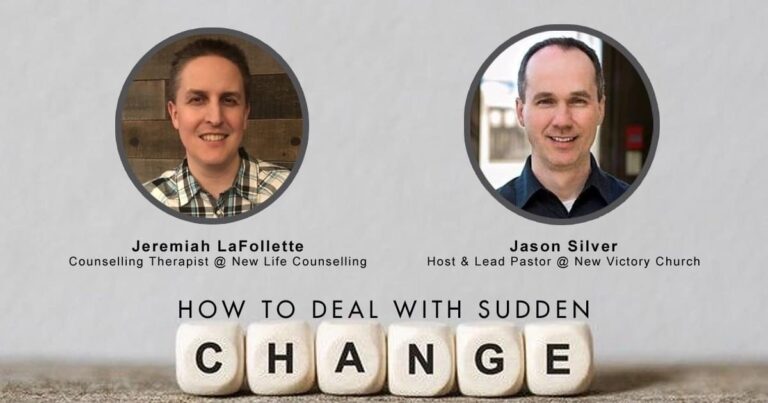At home, if you have a child or children then you are probably familiar with the topic known as Time Out. However, in my experiences in working with families with difficult children, many individuals do not understand the finer points of Time Out’s in order to make them effective. Instead, out of frustration, the parent will all to often give up on doing Time Out’s just before they are about to work. When considering Family Counselling Calgary to support your child with furthering your parenting skills, I will often discuss the concept of Time Out’s to discover what might be getting in the way of effectively doing Time Out’s.
In part 1 of an article called “Why what you’ve Heard About Time-Out May Not Be The Whole Story” by Matt Sanders and published on the Triple P-Parenting website, we’ll look at this important topic of fine tuning your parental Time-Out Skills.
“It’s not easy to be a parent at any time. But that’s particularly the case when you’re getting confusing messages, and we’re talking about something as important as children’s development.
What you think you know about “time-out” could be wrong, depending on what you’ve read lately, or who you’ve been talking to.
WILL THE REAL TIME-OUT (AND TIME IN) PLEASE STAND UP?
“Time out from positive reinforcement”, as it was first known, was developed in the 1960s. This was the first time parents had been offered an effective but non-punitive way to guide children without using damaging, dangerous or harsh discipline.
These days, do a search for “time-out” and you may see a number of viewpoints, including that time-out should be ditched and replaced by something people are calling “time in”.
Unfortunately, not only is this based on a misunderstanding of both terms, it’s confusing and potentially even harmful in some circumstances. But more on that later.
TOO SUCCESSFUL FOR ITS OWN GOOD…
The concept of time-out has been extensively researched and refined, but reputable sources all agree: time-out is effective if used as part of a loving, close, positive relationship; and it should only be used sparingly and as part of a broad range of positive parenting strategies. If used this way, it’s an effective, non-harmful way to guide children’s behaviour and help them learn to regulate their own emotions.
Over the past 30 years, so many studies have proven that time-out works, that it got to the point where, as one article puts it, “the data was so consistent that journals got sick of publishing it”.
Before long, the words “time-out” became part of popular culture. But gradually, the term came to represent something it was never intended to be: a go-to parenting strategy for every child and every situation. Eventually, time-out started to lose its meaning. Worse, it became distorted into something it was never meant to be. Hollywood movies referenced it, parents adopted it en masse without learning important dos and don’t’s, and some people went to extremes, misusing time-out to punish children in unreasonable and harmful ways.
Then in 2014, an article was published in Time magazine with a headline and introduction that gave the impression that time-out was not only “hurting” children; it was supposedly ineffective. The article received widespread coverage, prompting the article’s own authors, Dr Dan Siegel (M.D.) and Dr Tina Payne Bryson (Ph.D.) to issue a clarification a month later. Unfortunately, by that time, the idea that “time-outs are bad” had caught the attention of media and websites around the world looking for attention-getting headlines.
It’s just the latest example of how a modern myth is created. There’s a lot we think we “know”, based on reading information and “common sense” that’s actually not correct. Goldfish don’t have a 3-second memory, we use a lot more than 10% of our brains and you can’t see the Great Wall of China from space, but that hasn’t stopped many people from printing and believing those things over the years. The internet is great for distributing information, but it’s also notorious for publishing and re-publishing misinformation.
SO WHAT ARE SOME MYTHS AND FACTS ABOUT TIME-OUT?
MYTH: “Time-out is about making a child suffer.”
FACT: Time-out is not meant to be a “punishment”. I can’t stress this enough. It’s defined as time away – usually for one to five minutes – from what psychologists refer to as rewarding stimuli, which includes interesting activities and attention from the parent. This gives children an opportunity to regulate their own emotions and to calm down. The parent’s role is to create the situation that allows the child to do this.
MYTH: “Time-out should be used every time there’s a problem…and anyone can start doing it.”
FACT: Time-out is a strategy that should only be used:
- As part of a parenting plan with a focus on positive relationship-building;
- For serious behaviour, and when all other alternative strategies haven’t worked;
- When a parent or caregiver has been properly instructed on how and when to use it;
- When a child has a clear understanding of the rules of time-out;
- When it’s planned and not used in anger or as a threat;
- When it’s not being used frequently or for long periods; and
- When parents are carefully monitoring the use of time-out and can see that it’s working (which will be clear within a couple of weeks) and that it’s needed less and less.
(Within the Triple P – Positive Parenting Program, time-out is not taught to parents without all of the above also being explained and demonstrated.)
MYTH: “Time-out makes children bury their emotions.”
FACT: Time-out is used to teach children to deal with strong emotions in appropriate ways. It’s not used in situations where the child is anxious or upset about something that’s happened to them, such as an accident or being bullied. In these situations, it’s important to listen to the child, acknowledge their emotions, respond to their concerns, and help them to cope and problem-solve. However, when a child responds to being denied something they want – not need – by having a tantrum, time-out is a useful strategy to help them self-regulate and manage their frustration in such situations.
(A child needs food, clothing, shelter, a safe and educational environment, and love and affection; they may also “want” more toys, to throw things or hurt others, to stay up late, etc. Parents can help children learn the difference by demonstrating appropriate self-control, and praising appropriate behaviour when children don’t get everything they want. If necessary, they can use time-out to deal with tantrums.)
MYTH: “Time-out doesn’t work.”
FACT: Evidence-based parenting programs designed to help parents of children with behaviour difficulties almost always use a form of time-out as part of the intervention. There are hundreds of randomized controlled trials that show time-out (used in the way described within Triple P, and as part of a parenting program) is an effective strategy to reduce misbehaviour and promote self-regulation. It’s included in evidence-based parenting programs that have met stringent research criteria to be listed on research sites and authorities such as:
- The World Health Organization
- The United Nations/UNICEF
- Blueprints for Prevention
- The Californian Clearing House for Evidence-based Social Work
- MindMatters
- Parent Matters, and
- almost all professional associations around the world including:
- The Pediatric Association
- The American Psychological Association
- The Australian Psychological Association; and in Australian Government (Department of Education and Council on Children and the Media) publications and websites (such as raisingchildren.net.au).
MYTH: “Time-out damages the parent-child relationship.”
FACT: There’s an important principle within child development known as attachment theory (the idea that children’s development is fundamentally underpinned by a secure emotional bond with their main caregiver). Key proponents of attachment theory and related programs recognize the importance of time-out as a strategy for parents to teach children self-regulation and adaptive behaviour. For example, Dan Siegel promotes the use of time-out being used in the way that it is taught within Triple P, focusing especially on preparing the child ahead of time, and framing the routine in terms of teaching self-regulation skills, not punishment.
Once time-out is over, the parent focuses on re-engaging their child in an appropriate activity, catching them doing the right thing and praising them for it. So, rather than seeing time-out as a threat to the closeness of the parent-child relationship, most parents who learn to do time-out properly will see a big improvement in their child’s behaviour. Their child will become calmer, and parents will also remain calmer. Again, parents must be taught these strategies carefully so that they’re used correctly. Time-out works, and isn’t harmful, but only when it’s done properly.
Triple P incorporates a lot of things that promote a secure attachment relationship between parents and children. These include, to mention just a few, strategies such as:
- spending quality time
- showing affection
- tuning into cues
- responding to a child’s needs for attention and support, and
- teaching self-regulation skills.
Parents are also able to examine their own ideas about child behaviour and to manage their own emotions and behaviours during interactions with their children and family.
The complete article can be found if you click here.
Check out other Blogs written by New Life Counselling CLICK HERE
Jeremiah La Follette (MCC, RPC) is a registered professional counsellor who has a passion for providing positive results by restoring individual wholeness and healthy relationships.
For more information go to New Life Counselling or call 403-690-8617 for a free 15 minute consult to set up an online video counselling (telehealth) APPOINTMENT (CLICK HERE).


